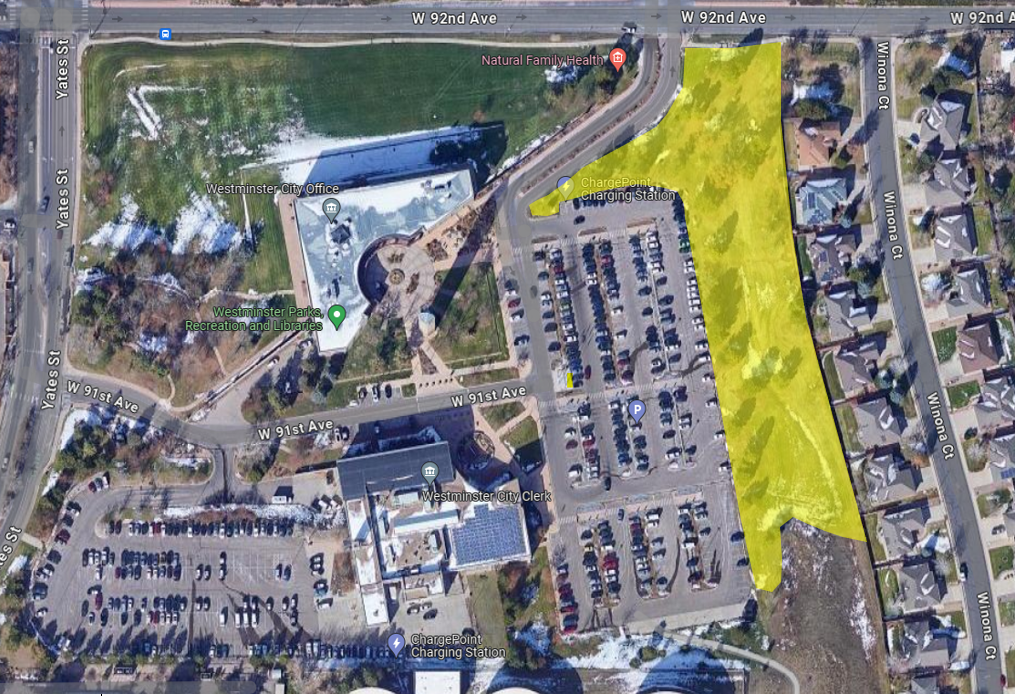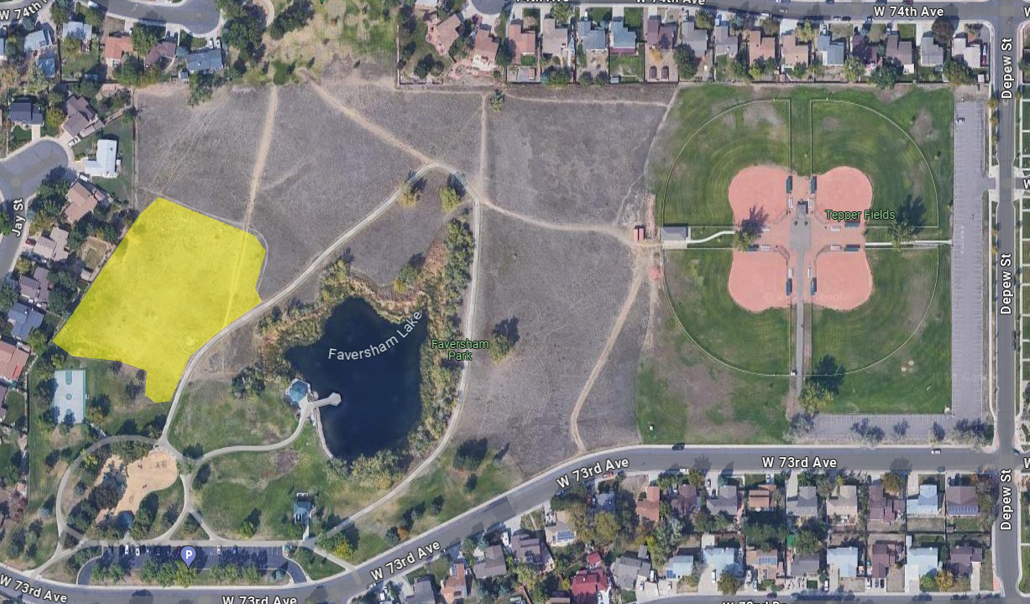Starting in April of 2024, the City of Westminster Parks and Open Space Division will be launching a new turf to native grass conversion program in various parks across Westminster. The following are parks that will have projects occurring in them in 2024:
City Hall (yellow highlighted area is where turf conversion will occur):
Area = 2.6 acres

Faversham Park (yellow highlighted area is where turf conversion will occur):
Area = 1.7 acres

These conversion projects will convert former and existing Kentucky bluegrass to native grass, including blue grama, buffalograss, little bluestem, green needlegrass, western wheatgrass, and more.
The program ties into the City’s commitment to water conservation and sustainability. Once fully established to native grass, the City Hall conversion is estimated to save approximately 500,000 gallons of water and 30 hours of mowing per year. The Faversham conversion is estimated to save approximately 325,000 gallons of water and 15 hours of mowing per year.
So why choose these locations?
These areas for turf conversion were chosen for several reasons:
- Water resource savings
- They have low use from visitors to these parks, so impact to park users should be minimal.
- Some of these areas were already receiving reduced maintenance but need more attention from staff to establish the native grass
Planned timeline:
- April 2024: Soil in conversion areas will be prepped
- May-July 2024: Conversion areas will be treated with non-residual, non-selective herbicide to keep site bareground until seeding
- July 2024: Conversion areas will be seeded with native warm season grass mix
- Fall 2024: Conversion areas will be seeded again with cool and warm season grass mix
- 2025-2029: Native grass establishment period
What to expect in the conversion areas:
- Because we will be seeding in July, there will be bareground in these areas from the onset of the project until seeding occurs.
- Native grass establishment can be a long process – 5+ years. Patience is required from all visitors to the park while we work towards establishment.
- In areas that have trails, we will continue to mow along both sides
- There will be no maintenance changes to sections of the parks outside of the conversion areas.
- Once seeding has occurred, please refrain from walking into these areas so the native grass can establish as best as possible.
Benefits of Native Grass:
- Native grass typically uses about 1/3 of the water turfgrass does. And once established, these areas will not need to be irrigated, leading to increased water conservation.
- Native plant diversity will increase, which will lead to a more balance ecosystem
- It will provide habitat to pollinators and other critical wildlife
- It will help outcompete invasive weed growth
- It will reduce the use of chemicals, especially fertilizer
- It will reduce the use of mowing equipment, thus reducing fuel emissions
Future conversion areas in other parks will be updated and shared here.